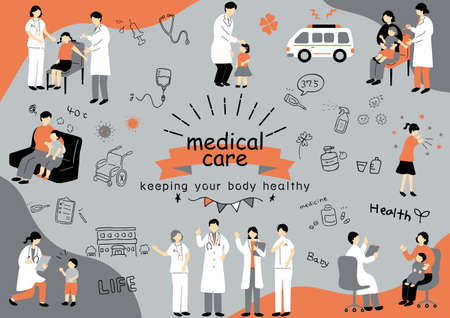Introduction: Understanding Microdermabrasion
Microdermabrasion has become a buzzword in the world of skincare, especially across spas, dermatology clinics, and beauty bars throughout the United States. As a non-invasive cosmetic procedure, microdermabrasion uses tiny crystals or diamond-tipped wands to gently exfoliate the outermost layer of dead skin cells, promoting a brighter and smoother complexion. Its appeal is rooted in its accessibility, minimal downtime, and promise of revitalized skin—which explains why it’s so popular among Americans seeking quick yet effective skin refreshes. However, with its rise in popularity comes an abundance of myths and misunderstandings that can leave consumers confused about what microdermabrasion can really do. In this article, we’ll cut through the noise by debunking some of the most persistent myths surrounding microdermabrasion, helping you make informed decisions about your skincare routine.
Myth: Microdermabrasion Is Only for Women
One of the most persistent misconceptions about microdermabrasion is that its a skincare treatment exclusively for women. In reality, this non-invasive procedure has rapidly gained popularity among men as well, reflecting broader cultural shifts toward self-care and grooming across all genders in the United States. Men are increasingly investing in skin health, driven by growing awareness of issues like sun damage, acne scarring, and uneven texture—concerns that transcend gender boundaries.
In recent years, med spas and dermatology clinics have reported a notable uptick in male clients seeking microdermabrasion. This trend aligns with changing attitudes toward wellness and appearance, where men are feeling more empowered to pursue aesthetic treatments without stigma. Not only does microdermabrasion offer quick results and minimal downtime, but it also appeals to busy professionals looking for efficient solutions to improve their skin’s appearance.
Microdermabrasion Use: Gender Breakdown
| Gender | % of Total Patients (2023) | Year-over-Year Growth |
|---|---|---|
| Women | 68% | +5% |
| Men | 32% | +19% |
This data highlights that while women still represent the majority, the rate at which men are adopting microdermabrasion far outpaces previous years—a testament to shifting societal norms.
The Benefits for Everyone
Microdermabrasion offers universal benefits, such as reducing fine lines, evening skin tone, and promoting collagen production. These advantages appeal to anyone interested in healthier-looking skin. More clinics now tailor their marketing and service offerings to be inclusive, providing a welcoming environment for all clients regardless of gender identity.
Breaking Down Barriers
The outdated idea that skincare is just for women no longer holds water. Today’s American culture embraces proactive self-care for everyone. As more men share their positive experiences with microdermabrasion—and as clinics continue to foster inclusivity—the myth that microdermabrasion is solely a women’s treatment is steadily being debunked.

3. Myth: Microdermabrasion Is Painful and Damaging
One of the most persistent misconceptions about microdermabrasion is that the procedure is inherently painful and can damage the skin. However, this belief is largely outdated and doesn’t reflect the advancements in modern skincare technology found in American spas and clinics today. In reality, microdermabrasion has evolved to become a gentle and safe treatment, designed with client comfort as a top priority.
Dispelling Discomfort Myths
Many people associate microdermabrasion with discomfort because early versions of the procedure used more abrasive materials and less refined technology. Today’s devices utilize state-of-the-art techniques—such as diamond-tipped wands or fine crystal sprays—that are both effective and minimally invasive. Most clients report only a mild scratching sensation during the session, which is far from painful. In fact, many describe it as relaxing or comparable to a deep facial exfoliation.
Emphasis on Safety Standards
American spas and dermatology clinics are strictly regulated, adhering to rigorous health and safety protocols. Licensed estheticians receive extensive training to ensure each procedure is performed safely and hygienically. This focus on professionalism dramatically reduces the risk of complications like redness or irritation, making microdermabrasion a routine part of many Americans’ skincare regimens.
Tailored Treatments for All Skin Types
Another reason why microdermabrasion is safer than ever is its adaptability. Practitioners can adjust the intensity of the treatment based on your unique skin type and needs, ensuring optimal results without unnecessary discomfort or risk of injury. For those with sensitive skin, lower settings can be used to deliver benefits while minimizing any potential side effects.
In summary, thanks to advances in equipment and strict adherence to industry best practices, microdermabrasion performed in reputable U.S. facilities is neither painful nor damaging. Instead, it’s a well-tolerated procedure that provides visible results without sacrificing safety or comfort.
Myth: Results Are Immediate and Permanent
One of the most pervasive misconceptions about microdermabrasion is that it delivers instant and everlasting results. While this treatment is known for its ability to refresh and rejuvenate the skin, expecting a one-and-done miracle isnt realistic. Understanding how microdermabrasion works and setting accurate expectations are key to achieving satisfaction with your skincare journey.
How Microdermabrasion Actually Works
Microdermabrasion exfoliates the outermost layer of dead skin cells, revealing a fresher, brighter complexion beneath. This process stimulates cell turnover and can help with issues like dullness, minor acne scars, uneven texture, and fine lines. However, because it only affects the surface level of your skin, the changes are subtle at first and build over time with consistent treatments.
When Do You See Results?
You may notice a gentle glow or smoother feel immediately after your first session. However, optimal improvements—such as more even tone or minimized pores—require multiple appointments spaced several weeks apart. The gradual enhancement is a natural part of your skin’s renewal cycle.
Immediate vs. Long-Term Outcomes: What to Expect
| Timeline | What Youll Notice |
|---|---|
| After 1 Session | Softer texture, slight radiance |
| After 3-6 Sessions | Improved tone, minimized appearance of fine lines, fading minor hyperpigmentation |
| Ongoing Maintenance | Sustained glow and clarity with regular sessions (every 4-6 weeks) |
The Necessity of Repeated Sessions
The effects of microdermabrasion are not permanent; environmental factors, aging, and natural skin processes continue regardless of treatment. To maintain that post-treatment glow and maximize benefits, dermatologists typically recommend a series of sessions followed by ongoing maintenance. Think of microdermabrasion as part of your long-term skincare routine rather than a quick fix.
5. Myth: It’s Only Effective for Certain Skin Types
One of the most persistent misconceptions about microdermabrasion is that it only works well for specific skin types—usually those with lighter complexions or minimal sensitivity. However, this myth doesn’t hold up against today’s technological advancements and America’s beautifully diverse population. In the past, some treatments were primarily tested on lighter skin tones, leading to concerns about safety and effectiveness for individuals with darker or more sensitive skin. But recent innovations in microdermabrasion technology have broadened its accessibility and safety profile. Modern devices offer adjustable settings tailored to a person’s unique skin needs, whether they have oily, dry, combination, or sensitive skin. Moreover, American dermatologists are now trained to recognize and treat a wider range of skin tones and textures, embracing the country’s multicultural reality. This inclusive approach ensures that people from all backgrounds can benefit from microdermabrasion without risking hyperpigmentation or irritation. By choosing a reputable provider who understands these nuances, clients can experience smoother, more radiant skin regardless of ethnicity or complexion—a true reflection of how skincare in the U.S. is evolving to meet the needs of everyone.
6. Myth: At-Home Devices Are Just as Good as Professional Treatments
With the popularity of at-home beauty gadgets on the rise, many consumers believe that over-the-counter microdermabrasion devices can match the results of professional treatments. However, it’s important to recognize the significant differences between these options, especially within the context of U.S. regulations and safety standards.
Professional Microdermabrasion: Advanced Technology & Expertise
Professional microdermabrasion treatments are performed by licensed estheticians or dermatologists using medical-grade equipment. These devices have stronger suction power and higher-quality abrasive materials, allowing for more effective exfoliation and deeper skin rejuvenation. Professionals are also trained to assess your skin type, customize treatment intensity, and monitor for adverse reactions, minimizing risks.
At-Home Devices: Convenience with Limitations
At-home microdermabrasion devices offer convenience and cost-savings, but they are deliberately designed to be less powerful due to safety concerns. The FDA regulates these consumer products under different standards than professional equipment. Over-the-counter devices must be safe for unsupervised use, so their effectiveness is limited compared to what you’d experience in a clinic.
Regulation and Consumer Safety in the U.S.
In the United States, professional microdermabrasion machines used by licensed practitioners are subject to stricter oversight and may even require registration with the FDA if classified as medical devices. On the other hand, at-home tools are regulated primarily for safety rather than efficacy. This distinction means consumers should not expect identical results or assume equal safety profiles across both categories.
The Bottom Line
While at-home microdermabrasion devices can be a useful addition to your skincare routine, they cannot replace the expertise, technology, and comprehensive care provided by professionals. If you’re seeking dramatic improvements or have specific skin concerns, consult a licensed provider for guidance—and always prioritize safety when considering any cosmetic device purchase.
7. Conclusion: Making Informed Choices About Microdermabrasion
When it comes to microdermabrasion, separating fact from fiction is essential for anyone considering this popular skincare treatment. In today’s digital age, misinformation spreads quickly—especially on social media platforms and beauty forums where personal anecdotes often overshadow scientific evidence. While microdermabrasion has proven benefits for skin texture, radiance, and minor imperfections, it’s not a cure-all or a one-size-fits-all solution. The best results come from understanding your unique skin needs and working with qualified dermatological professionals who can provide evidence-based recommendations tailored to you. Rather than relying solely on viral trends or anecdotal reviews, trust board-certified dermatologists and well-established clinical research when making decisions about your skin health. By arming yourself with accurate information and expert guidance, you’ll be empowered to make choices that are both safe and effective, ensuring your journey toward healthier, more radiant skin is built on knowledge—not myths.


